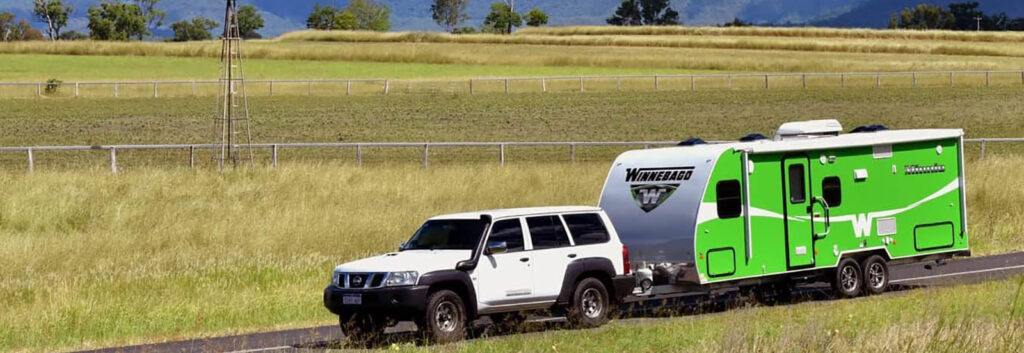When embarking on your next adventure with a caravan, understanding the different weights involved is crucial for safety and efficiency. Caravan weights, including the Aggregate Trailer Mass (ATM), the Gross Trailer Mass (GTM), and the tare weight, play a significant role in ensuring that your vehicle is roadworthy and compliant with regulations. In this guide, we’ll break down these important terms and give you the knowledge to effectively manage your caravan’s weight.
What is a Tare Weight?
Tare weight refers to the weight of the caravan when it is empty, excluding any cargo, fluids, or additional accessories. This base measurement is critical as it forms the foundation for the other weight classifications. Knowing your caravan’s tare weight allows you to understand how much weight you can legally and safely add when packing for your journey. Always ensure you weigh your caravan as accurately as possible, as underestimating this can lead to overloading and potential legal issues.
What is ATM Weight on a Caravan
The Aggregate Trailer Mass (ATM) is the maximum weight your fully loaded caravan can weigh, including its tare weight and all the cargo within it. Knowing the ATM is essential for complying with road regulations and your vehicle’s towing capabilities. Exceeding this specified limit can result in fines, increased wear and tear on your vehicle, and serious safety compromises. Always check your caravan’s manufacturer specifications to ensure you’re within the allowed limit, and consider investing in a reliable scale to weigh your fully loaded caravan.
Navigating Gross Trailer Mass (GTM)
The Gross Trailer Mass (GTM) represents the total weight the caravan’s wheels bear when it is loaded and hitched to a vehicle. This figure is significant when considering the towing capacity of your car and ensuring that both the caravan and vehicle can handle the load without impairing performance. Distributing weight evenly within the caravan and ensuring that your towing vehicle is rated to handle the GTM can enhance safety and improve handling while on the road.
Assessing Payload Capacity
One key aspect of dealing with caravan weights is understanding payload capacity, which is how much you can safely load onto your caravan beyond its tare weight. This includes everything from personal belongings to food supplies to equipment. To determine your payload capacity, subtract the tare weight from the ATM. Keeping your payload within the designated limit protects your vehicle and ensures safe towing dynamics, reducing the chances of swaying or losing control while on the road.
Weight Distribution for Stability
Proper weight distribution within your caravan is crucial for maintaining stability during travel. An unbalanced load can lead to dangerous handling characteristics, especially on winding roads or during sudden maneuvers. Position heavier items closer to the axle and distribute lighter items toward the front or rear as needed. Utilising stabilisers and ensuring that your load is well-secured can help enhance the caravan’s stability, leading to a smoother and safer driving experience.
To Tow or Not to Tow: Vehicle Compatibility
Before heading out, verify that your vehicle is compatible with your caravan’s weight specifications. Manufacturer guidelines typically indicate the maximum trailer weight your vehicle can safely tow, which should include your caravan’s GTM. Failing to match the towing capacity with the GTM can result in serious safety hazards, including reduced braking efficiency and potential accidents. Always refer to your vehicle’s manual and consult with your dealer if you are unsure about its towing capabilities.
Legalities and Regulations
It’s important to be aware of the legal regulations governing caravan weights in your region. States and countries have specific laws about towing limits, necessary licensing, and weight distribution requirements. Familiarising yourself with these regulations is a matter of legal compliance and a commitment to road safety. Regularly check any updates to the laws, as they can change, and ensure that your caravan is up to code, especially if you plan to travel across borders.
Tips for Maintaining Your Hybrid Caravan
Owning a hybrid caravan is not just about enjoying the joys of travel; it’s also about maintaining your investment to ensure it lasts for many future trips. Regular maintenance checks are essential, including inspecting seals and membranes to prevent leaks in the pop-up area, checking tyre pressure, and ensuring brakes are in optimal condition. Additionally, keeping your caravan clean and organised will enhance your travels and prolong the life of your equipment. Don’t forget to familiarise yourself with the specific needs of hybrid caravans versus traditional caravans to maximise the longevity of your vehicle.
Tips for Weighing Your Caravan
There are several different methods for effectively weighing your caravan. Portable weighbridges are an excellent choice for accurately measuring your total weight, though many caravan parks and campsites also offer weighing services. If you frequently travel, consider investing in a simple yet reliable scale that can fit under your caravan’s wheels. Regular checks, especially after loading up for trips, can help avoid unintentional overloading and keep you within safe limits.
Understanding caravan weights is more than just number-crunching; it’s about ensuring a safe and enjoyable travel experience. Navigating the world of caravan weights requires attention to detail and a proactive approach to safety. By familiarising yourself with tare weights, ATM, and GTM, you can make informed decisions that contribute to a hassle-free journey. Before you hit the road, always double-check your caravan’s weight specifications, and share this knowledge with other caravan enthusiasts. After all, an informed traveller is responsible and ready for all the adventures that lie ahead! So, what are you waiting for? Find your local holiday park here, and let’s go!




